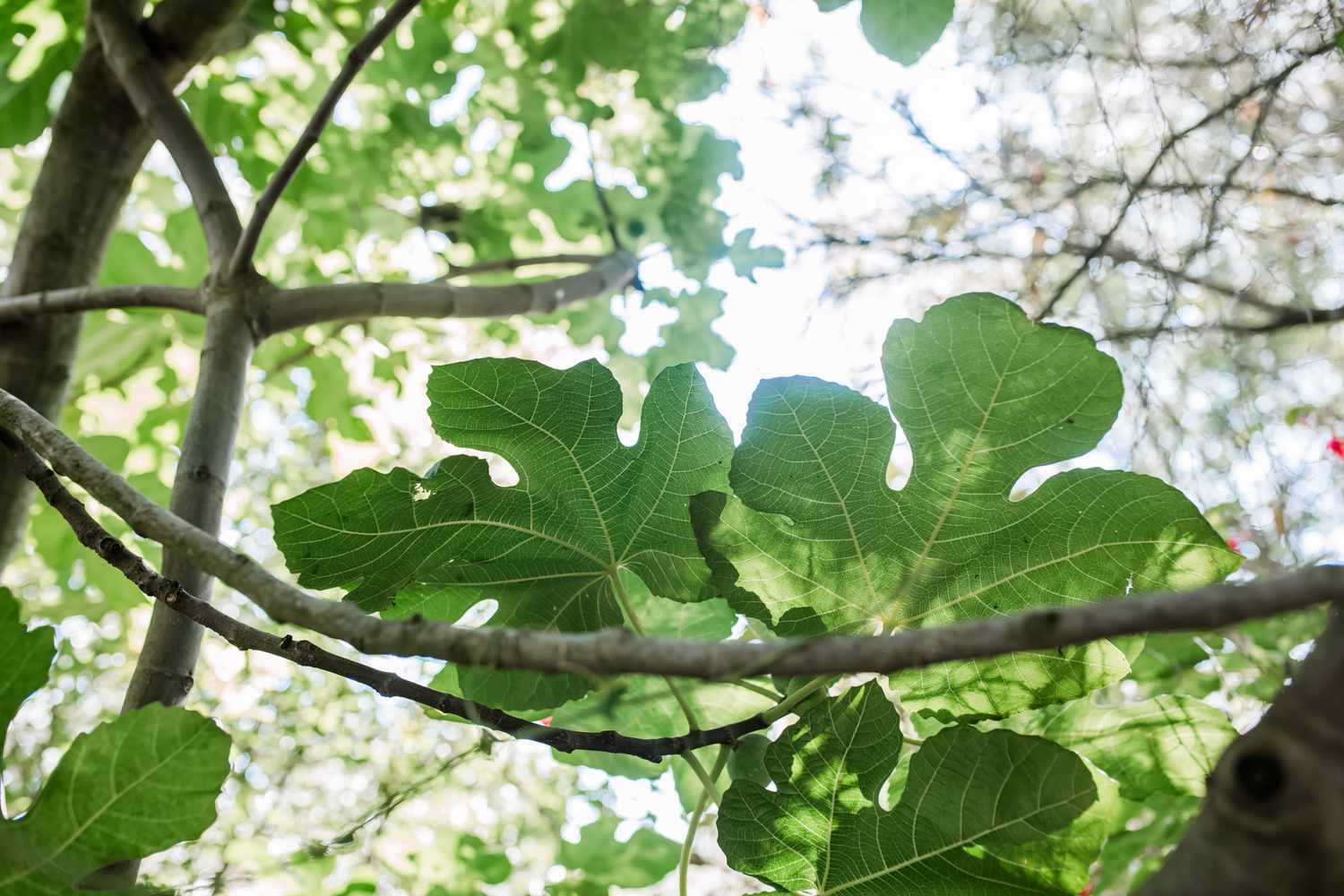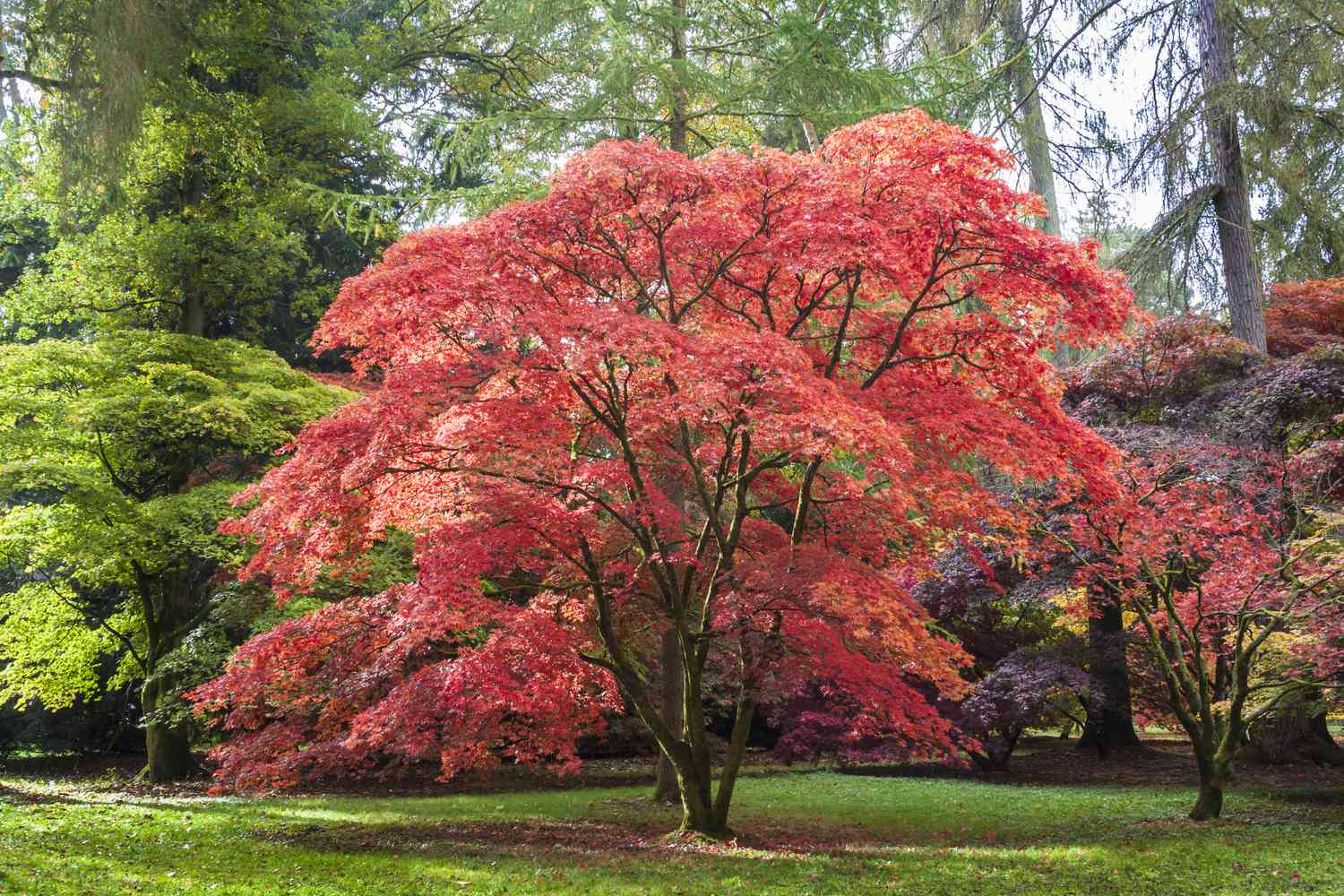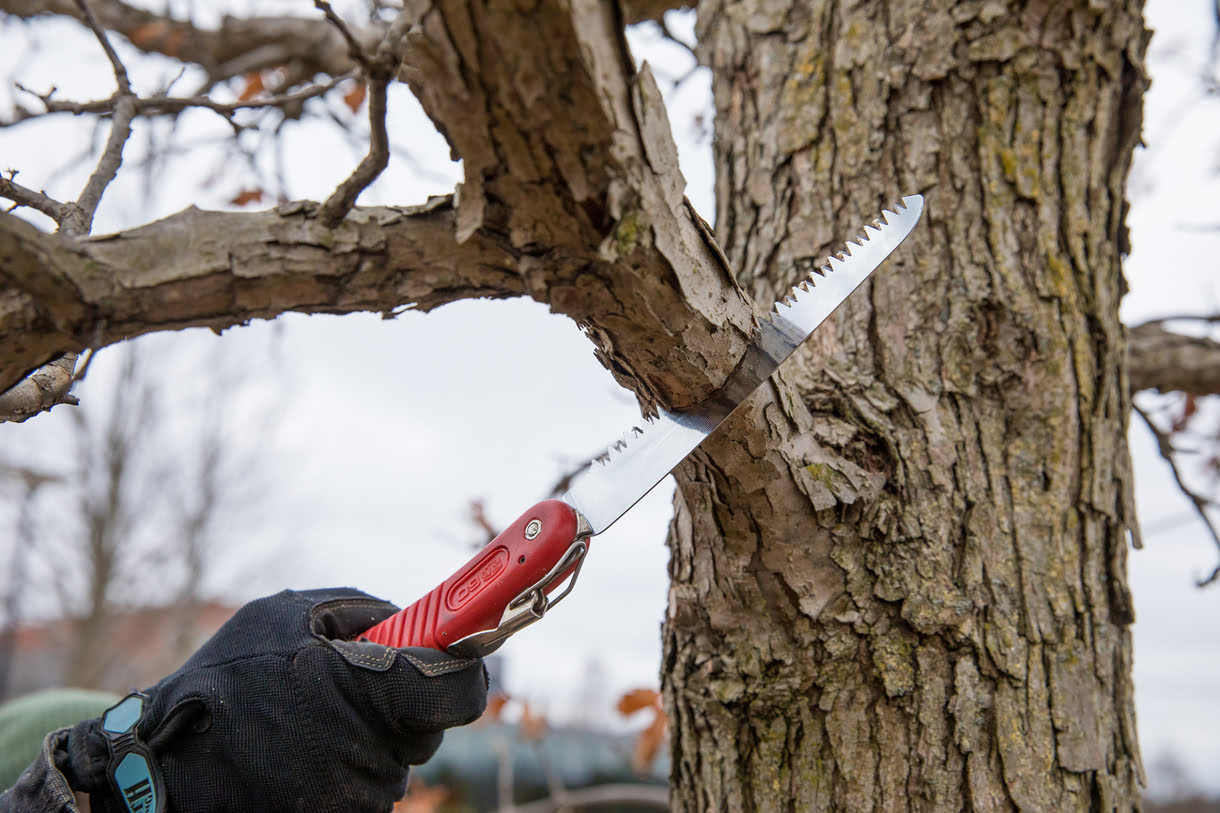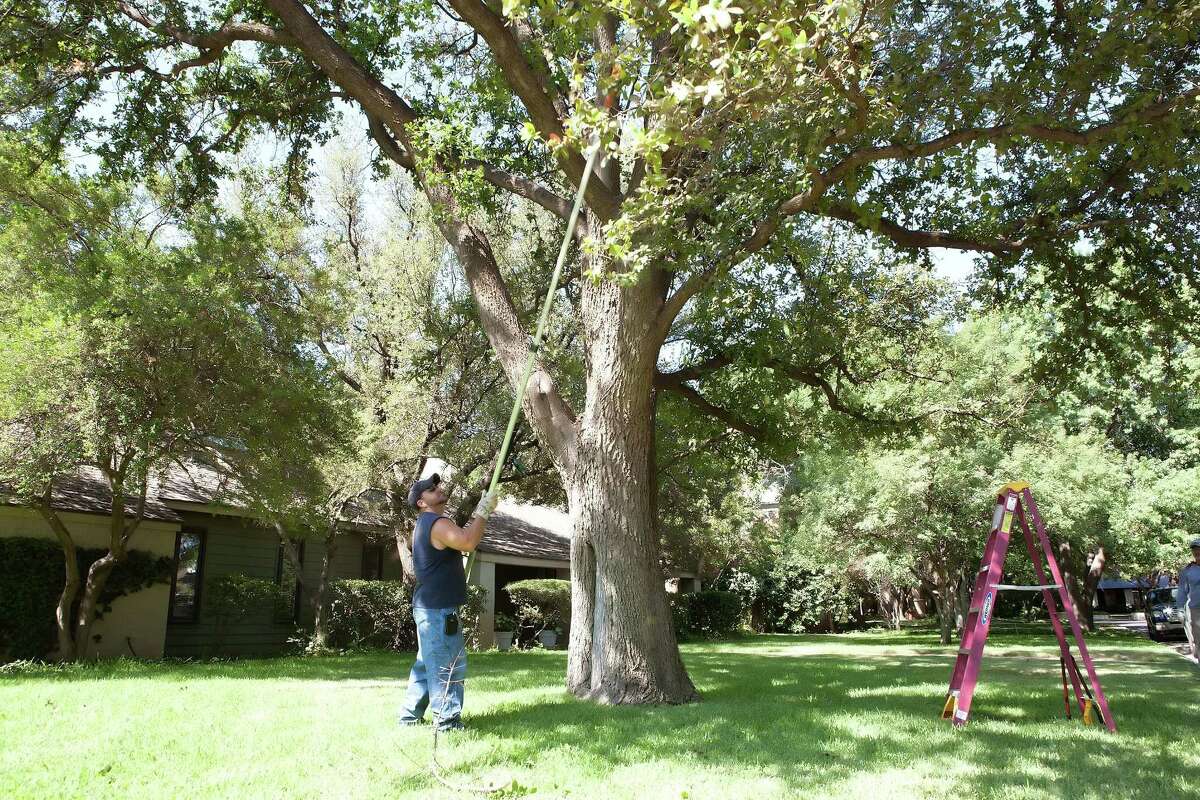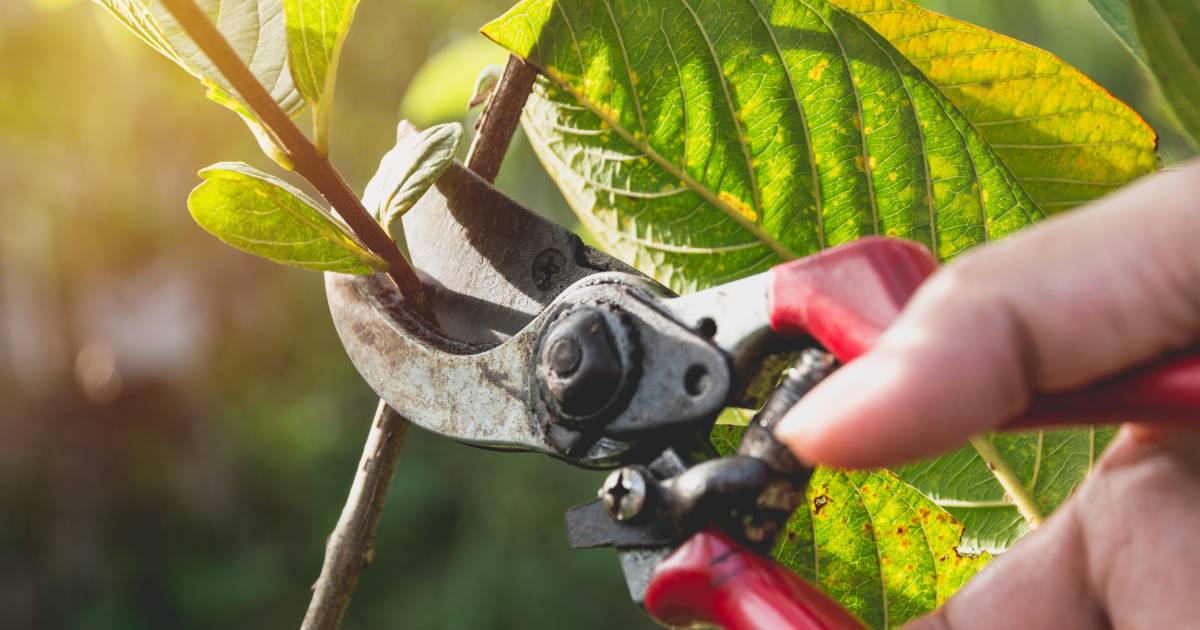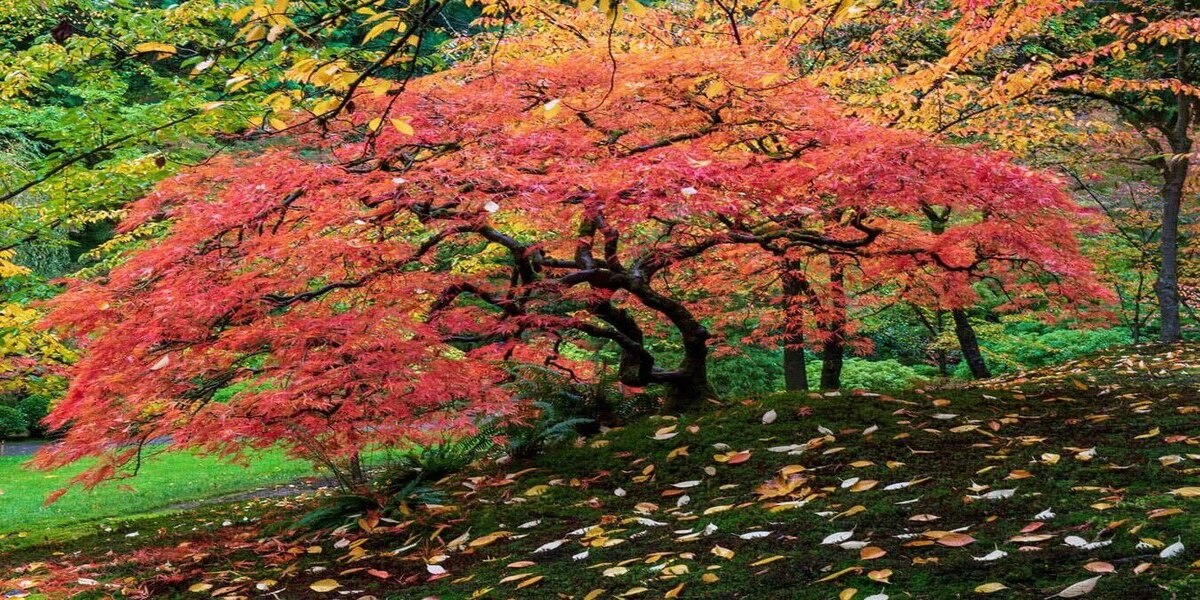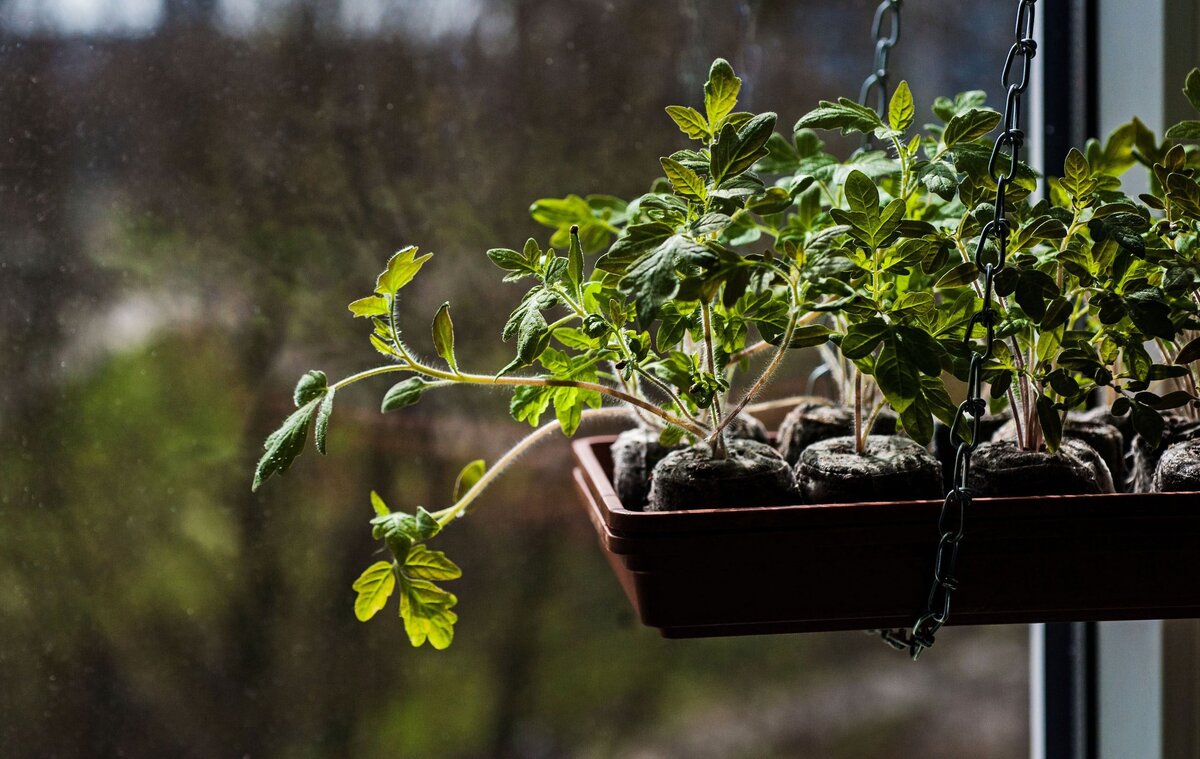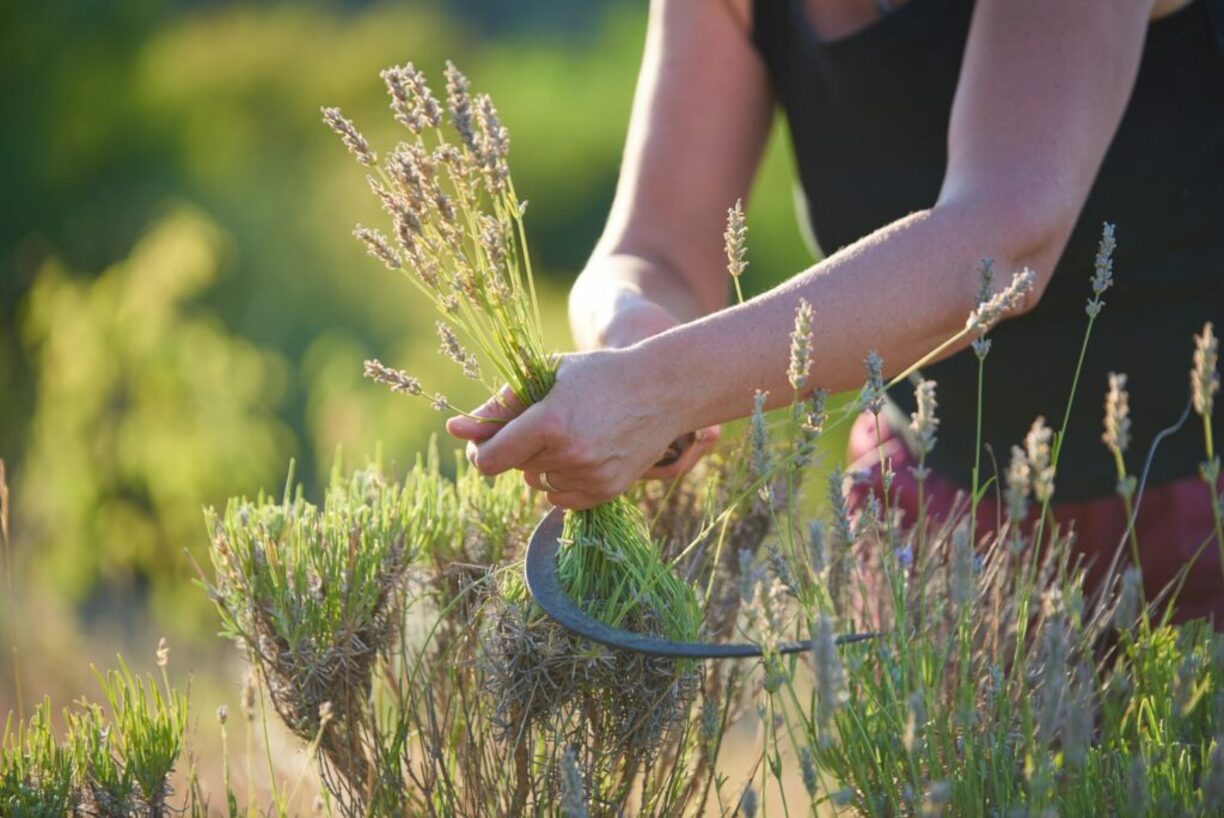Home>Gardening Techniques>Plant Care>When To Prune Nectarine Trees
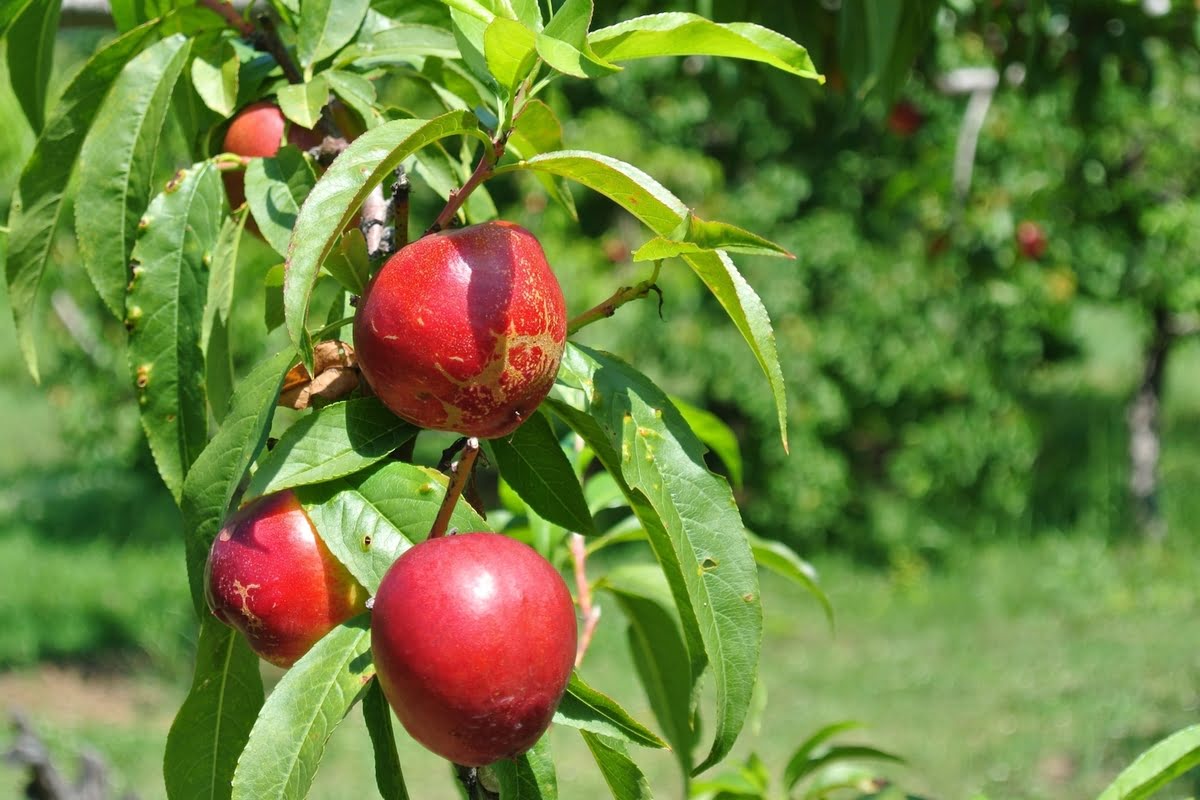

Plant Care
When To Prune Nectarine Trees
Modified: January 22, 2024
Learn the best time to prune nectarine trees and essential plant care tips to ensure healthy growth. Enhance your gardening skills with expert advice.
(Many of the links in this article redirect to a specific reviewed product. Your purchase of these products through affiliate links helps to generate commission for Chicagolandgardening.com, at no extra cost. Learn more)
Table of Contents
- Introduction
- Benefits of Pruning Nectarine Trees
- Factors to Consider Before Pruning
- Pruning Nectarine Trees in Winter
- Pruning Nectarine Trees in Spring
- Pruning Nectarine Trees in Summer
- Pruning Nectarine Trees in Fall
- How to Prune Nectarine Trees Properly
- Common Mistakes to Avoid While Pruning
- Tools and Equipment Needed for Pruning
- Conclusion
Introduction
Welcome to the world of nectarine tree care! Nectarine trees are not only beautiful additions to any landscape, but they also provide you with delicious and juicy fruits. However, to ensure that your nectarine tree stays healthy and productive, proper pruning is essential.
Pruning nectarine trees involves the process of selectively removing branches and parts of the tree to promote growth, improve air circulation, and increase fruit production. It is an art and science that requires careful consideration of timing, technique, and tools.
In this article, we will explore the best practices for pruning nectarine trees throughout the seasons. We will discuss the benefits of pruning, factors to consider before pruning, and the specific techniques to use during different times of the year. By the end of this article, you will have a comprehensive understanding of how and when to prune your nectarine tree to achieve optimal results.
Whether you are a seasoned gardener or a beginner, this article will provide you with valuable insights and tips to properly care for your nectarine tree. So grab your pruning shears and let’s dive into the wonderful world of nectarine tree care!
Benefits of Pruning Nectarine Trees
Pruning nectarine trees offers numerous benefits that contribute to the overall health and productivity of the tree. Let’s explore some of the key advantages of regular pruning:
- Promotes Growth: Pruning stimulates the growth of new branches and shoots, leading to a more robust and vigorous nectarine tree. Removing dead or diseased branches redirects the tree’s energy towards new growth, ensuring a healthy and thriving tree.
- Enhances Fruit Production: Pruning plays a vital role in maximizing fruit production. By selectively removing branches, you can improve air circulation and sunlight exposure to the remaining fruit-bearing branches. This results in larger, tastier fruits and a higher yield.
- Improves Tree Structure: Trimming nectarine trees helps in developing a strong and well-balanced tree structure. By removing weak or crossing branches, you prevent the risk of branch breakage and ensure that the tree maintains an attractive shape.
- Controls Disease and Pest Infestation: Pruning allows for better air circulation and sunlight penetration throughout the tree canopy. This helps in reducing the risk of disease development and keeps pests at bay. Additionally, pruning helps in identifying and removing any infected or infested branches, preventing the spread of illness or pests to the rest of the tree.
- Maintains Tree Size: Regular pruning helps in controlling the size of the nectarine tree, ensuring that it remains manageable and fits within the available space. This is particularly important if you have limited space or are growing the tree in a container.
These are just a few of the many benefits that pruning provides. It is clear that by incorporating regular pruning into your nectarine tree care routine, you are setting the stage for a healthy, productive, and visually appealing tree.
Factors to Consider Before Pruning
Before you grab your pruning shears, it’s important to consider a few factors that will influence the timing and approach of your nectarine tree pruning. Taking these factors into account will ensure that you make informed decisions and achieve the best results:
- Timing: The timing of pruning plays a crucial role in the overall health and growth of your nectarine tree. It’s essential to understand the specific pruning requirements for nectarine trees, as they differ from other fruit trees. Generally, the best time to prune nectarine trees is during the dormant season, typically in late winter or early spring. However, there are exceptions and alternative pruning techniques for specific situations, which we will explore in the following sections.
- Weather Conditions: It’s important to consider the weather conditions before pruning your nectarine tree. Avoid pruning during periods of extreme cold or frost, as this can damage the tree. Similarly, if it’s excessively hot or dry, delaying pruning until the weather becomes more favorable is advisable.
- Tree Age and Health: The age and overall health of the nectarine tree should also be taken into account. Young trees may require less drastic pruning, focusing primarily on shaping and maintaining a strong framework. Older trees may benefit from more extensive pruning to rejuvenate growth and remove any dead or diseased branches.
- Desired Tree Shape and Size: Consider the desired shape and size of your nectarine tree. Pruning can help you achieve the desired architectural structure of the tree, whether it’s a open vase shape or central leader system. Understanding and implementing correct pruning techniques will ensure that your tree grows in the desired form.
- Personal Safety: Lastly, always prioritize personal safety when pruning your nectarine tree. Make sure you have the proper tools and equipment, such as sharp pruning shears, ladders, and safety goggles. Be cautious while climbing and using sharp tools, and if a branch is out of reach or requires professional expertise, consider seeking assistance.
By considering these factors, you’ll be well-prepared to approach the pruning process with confidence and ensure that your nectarine tree thrives as a result.
Pruning Nectarine Trees in Winter
Winter is an ideal time to prune nectarine trees as they are dormant, which means they are not actively growing. Pruning during this period helps promote vigorous growth when spring arrives. Here are some key considerations when pruning nectarine trees in winter:
- Remove Dead and Diseased Wood: Start by inspecting the tree for any dead, damaged, or diseased branches. These should be pruned back to healthy wood, making clean cuts just outside the branch collar or at the base of the branch.
- Open Up the Center: Nectarine trees benefit from an open center or open vase shape. This allows for better light penetration and air circulation, reducing the risk of disease. Identify any crowded or crossing branches in the center of the tree and remove them, creating an open and balanced framework.
- Thin Out Excessive Growth: If you notice excessive branches or dense growth within the tree, thinning out some of the smaller branches can help improve light and air movement. Aim to maintain an overall balanced appearance while ensuring there is enough space between each branch.
- Prune for Size Control: If your nectarine tree is getting too large or overgrown, winter pruning can help manage its size. You can selectively remove branches that are growing too vigorously or encroaching on nearby structures or plants.
- Avoid Heavy Pruning: While winter pruning is beneficial, it’s important to avoid excessive or heavy pruning. Severe pruning in winter can stimulate excessive growth in spring, leading to weak, leggy branches. Aim for a light to moderate pruning to maintain the tree’s shape and strength.
Remember to always use sharp and clean pruning tools to make precise cuts and minimize the risk of disease transmission. Also, be mindful of the weather conditions and prune on a dry day to prevent spreading fungal spores. By following these guidelines, you can effectively prune your nectarine tree during winter, setting the stage for a bountiful harvest in the coming months.
Pruning Nectarine Trees in Spring
Spring is another optimal time to prune nectarine trees, especially if you missed the opportunity to prune during the winter. Pruning in spring allows you to shape the tree, remove any remaining deadwood, and encourage healthy growth. Consider the following tips when pruning nectarine trees in spring:
- Remove Suckers and Water Sprouts: Look out for suckers, which are shoots emerging from the base of the tree, and water sprouts, which are vigorous vertical shoots. These should be promptly removed as they can divert energy away from the main branches of the tree.
- Thin Out Excessive Fruit Buds: If your nectarine tree has an abundance of fruit buds, it’s important to thin them out. Too many fruits can strain the tree and result in small, low-quality harvest. Leave an appropriate spacing between the remaining fruit buds to allow for optimal development.
- Shape the Tree: Use spring pruning to shape the nectarine tree and maintain its desired form and structure. Identify any branches that are growing in awkward directions or crossing each other and remove them. As always, make clean cuts just outside the branch collar to promote healing.
- Address Winter Damage: Winter can cause damage to nectarine trees, such as broken branches or split bark. Spring pruning is an opportunity to assess and address any winter damage. Remove any broken or damaged branches and make clean cuts to promote healing and prevent disease entry.
- Prune After Bloom: It is generally recommended to prune nectarine trees after they have finished blooming. This way, you can avoid accidentally removing potential flowers or disrupting pollination. Be mindful of the blooming period of your specific nectarine tree variety to determine the ideal time for pruning.
By following these guidelines, you can effectively prune your nectarine tree in spring, ensuring a healthy and fruitful growing season. Remember to regularly inspect your tree throughout the year for any additional pruning needs, and always prioritize making clean and precise cuts.
Pruning Nectarine Trees in Summer
While pruning nectarine trees is commonly done in winter and spring, there are certain situations where summer pruning may be necessary. Summer pruning focuses mainly on maintenance and corrective pruning. Here are some key considerations when pruning nectarine trees in summer:
- Remove Water Sprouts and Suckers: Summer is a good time to remove any water sprouts or suckers that may have emerged after spring pruning. These shoots can sap energy from the main branches and negatively impact fruit production if left unaddressed.
- Thin Out Dense Foliage: Summer pruning allows you to thin out the dense foliage of the nectarine tree. Prune away some branches that are blocking sunlight and preventing proper air circulation within the tree canopy. This helps to reduce the risk of disease and pests and improves overall fruit quality.
- Control Growth: If you notice excessive growth or long, leggy branches during the summer, you can prune them back to maintain the overall shape and size of the tree. However, be cautious not to remove too much foliage, as the leaves provide energy through photosynthesis.
- Address Overcrowding: If the branches of your nectarine tree are overcrowded or rubbing against each other, summer pruning can help create more space and reduce the risk of fungal diseases. Selectively remove the problem branches, making clean cuts just outside the branch collar.
- Remove Diseased or Damaged Branches: Summer is a good time to inspect your nectarine tree for any signs of disease or damage. Remove any diseased or damaged branches promptly to prevent further spread and to allow the tree to focus its energy on healthy growth.
While summer pruning should be done with caution to avoid excessive stress on the tree, it can be an effective way to maintain the tree’s health and manage its shape. Remember to always use sharp, clean pruning tools and make proper cuts to minimize the risk of disease transmission. Regularly monitor your nectarine tree throughout the summer and address any pruning needs as they arise.
Pruning Nectarine Trees in Fall
Fall is generally not the ideal time to prune nectarine trees. However, there are a few situations where fall pruning may be necessary. Here are some key considerations when pruning nectarine trees in the fall:
- Remove Dead and Diseased Wood: Fall is a good time to inspect your nectarine tree for any dead, damaged, or diseased branches. Removing these branches can help prevent the spread of disease and improve the overall health of the tree.
- Address Immediate Hazards: If you notice any branches that pose an immediate hazard, such as those hanging dangerously low or obstructing structures, pruning them in the fall can help prevent accidents during the upcoming winter months.
- Trim for Clearance: Pruning in the fall can be beneficial if you need to provide clearance around the tree. This is particularly important if your nectarine tree is located near walkways, power lines, or other structures. Remember to make proper cuts just outside the branch collar to promote healing.
- Prune for Shape: Fall pruning can also be used to maintain the shape and aesthetics of your nectarine tree. Remove any branches that are growing in irregular or undesirable directions, and thin out dense or overcrowded areas to promote better air circulation and sunlight penetration.
- Limit Fall Pruning: It’s important to note that fall pruning should be limited and focused only on immediate needs. Avoid extensive pruning during this time, as it can stimulate new growth that may not have enough time to harden off before the arrival of winter, making the tree vulnerable to cold damage.
While fall pruning should generally be minimal, taking care of immediate concerns and ensuring the safety of your nectarine tree can be done during this season. Remember to use clean, sharp pruning tools and make proper cuts to avoid introducing diseases. As always, prioritize the health and well-being of your nectarine tree when deciding whether to prune in the fall.
How to Prune Nectarine Trees Properly
Proper pruning techniques are essential to ensure the health, productivity, and overall appearance of your nectarine tree. Here are some guidelines for pruning nectarine trees effectively:
- Begin with Clean and Sharp Tools: Before starting the pruning process, make sure your pruning tools are clean and sharp. Clean tools help prevent the spread of diseases, while sharp tools ensure clean and precise cuts without causing unnecessary damage to the tree.
- Identify Dead and Diseased Wood: Start by identifying and removing any dead, damaged, or diseased wood. These branches should be pruned back to healthy wood, making cuts just outside the branch collar or at the base of the branch.
- Create an Open Center: Nectarine trees benefit from an open center or open vase shape. Remove any crowded or crossing branches in the center of the tree to create an open and balanced framework. This helps improve air circulation and sunlight penetration, reducing the risk of disease.
- Remove Water Sprouts and Suckers: Look out for any water sprouts or suckers, which are vigorous shoots that emerge from the base or interior of the tree. These should be promptly removed as they can divert energy away from the main branches and affect fruit production.
- Thin Out Excessive Growth: If your nectarine tree has dense growth or excessive branches, thinning out some of the smaller branches can help improve light and air movement. Aim for an overall balanced appearance while ensuring there is enough space between each branch.
- Promote Fruit Bud Development: Prune to encourage the development of fruit buds. Remove a portion of the small, immature fruits to ensure the remaining fruit has enough space to grow and achieve optimal size and quality.
- Avoid Over-Pruning: While pruning is necessary, avoid over-pruning as it can lead to excessive growth and weakened branches. Prune no more than one-third of the tree’s total growth in a single year to maintain its strength and vitality.
Remember, each nectarine tree is unique, so adapt your pruning techniques to suit the specific needs and growth patterns of your tree. Regularly monitor your nectarine tree throughout the year and address any pruning needs as they arise. With proper pruning, your nectarine tree will thrive and reward you with abundant and delicious harvests.
Common Mistakes to Avoid While Pruning
Pruning nectarine trees requires careful attention to detail and proper technique. To ensure the health and vitality of your tree, it’s important to avoid these common mistakes while pruning:
- Pruning at the Wrong Time: Pruning nectarine trees at the wrong time can have a negative impact on their growth and fruit production. Understand the specific pruning requirements for nectarine trees, and avoid pruning during active growth periods or during extreme weather conditions.
- Over-Pruning: Over-pruning can weaken the structure of the tree and lead to excessive growth. Avoid removing more than one-third of the tree’s total growth in a single year to maintain its strength and overall health.
- Making Improper Cuts: Improper cutting techniques can injure the tree and create opportunities for disease entry. Always use clean, sharp pruning tools and make cuts just outside the branch collar or at the base of the branch to promote healing and minimize damage.
- Removing Too Many Fruit Buds: While it’s important to thin out some fruit buds to improve fruit quality, removing too many buds can affect the tree’s overall productivity. Strive for a balance by leaving an appropriate number of buds to ensure a bountiful harvest.
- Ignoring Safety Precautions: Pruning can be physically demanding and potentially hazardous. Do not overlook safety precautions. Wear appropriate protective gear, use stable ladders or platforms when necessary, and be mindful of your surroundings to prevent accidents and injuries.
- Pruning When Wet: Pruning wet branches can facilitate the spread of diseases. Avoid pruning nectarine trees when it’s raining or immediately after rain. Wait for the branches to dry off to reduce the risk of disease transmission.
- Not Assessing Tree Shape and Structure: Neglecting to assess the shape and structure of the tree during pruning can lead to an imbalanced or weak tree. Take the time to evaluate the tree’s overall form and remove any branches that are growing in undesirable directions or crossing each other.
By avoiding these common pruning mistakes, you can promote the health and vigor of your nectarine tree, leading to a strong, productive, and aesthetically pleasing tree in your garden.
Tools and Equipment Needed for Pruning
Having the right tools and equipment is crucial for successful pruning of nectarine trees. Here are some essential tools and equipment you will need:
- Pruning Shears: Pruning shears, also known as secateurs, are essential for making clean and precise cuts. Invest in a high-quality pair with a sharp blade that can easily cut through branches of various sizes.
- Loppers: Loppers have longer handles and are used for cutting thicker branches. They provide extra leverage and enable you to reach branches that are out of reach of pruning shears. Choose loppers with a bypass or anvil cutting mechanism, depending on your specific pruning needs.
- Pruning Saw: A pruning saw is necessary for cutting larger branches that cannot be handled by pruning shears or loppers. Look for a pruning saw with a sharp blade and a comfortable handle to make clean and controlled cuts.
- Pole Pruner: If your nectarine tree is larger or taller, a pole pruner can be useful for reaching high branches. It consists of a pruning saw or pruning shears attached to an extendable pole, allowing you to reach branches without using a ladder.
- Safety Gear: Always prioritize safety when pruning. Wear safety goggles to protect your eyes from flying debris, gloves to provide grip and protect your hands, and sturdy, non-slip footwear to prevent accidents while climbing ladders or handling tools.
- Pruning Sealant: While not always necessary, some gardeners choose to use pruning sealant to cover larger cuts or wounds on the tree. Pruning sealant helps protect the cut area from pests and diseases. However, it’s important to note that some experts believe natural healing processes are more effective in preventing infections.
- Ladder or Platform: Depending on the height of your nectarine tree, you may need a ladder or a platform to reach higher branches. Choose a sturdy and stable ladder or platform that provides secure footing to ensure your safety while pruning.
Having these tools and equipment readily available will make your pruning tasks more efficient and help you achieve clean and precise cuts. Remember to care for and maintain your tools properly, including sharpening the blades and keeping them clean, to ensure their longevity and optimal performance.
Conclusion
Pruning nectarine trees is a crucial aspect of plant care that ensures the health, productivity, and aesthetic appeal of your tree. By understanding the appropriate techniques and timing for pruning, you can promote favorable growth, improve fruit production, and maintain a strong and balanced tree structure.
Throughout the seasons, it’s important to consider the factors that influence pruning decisions, such as timing, tree age, and desired tree shape. Winter and spring are generally the primary pruning periods, where you can remove deadwood, shape the tree, and thin out excessive growth. However, there may be specific instances where pruning in summer or fall is necessary, such as addressing immediate hazards or correcting growth patterns.
While pruning, it is essential to avoid common mistakes, like over-pruning, making improper cuts, or not assessing the tree’s shape and structure. By following proper pruning techniques and using the right tools, you can prevent damage to the tree and reduce the risk of diseases.
Remember, each nectarine tree is unique, and it’s important to adapt your pruning approach based on its specific needs and growth patterns. Regularly monitoring your tree and addressing pruning needs as they arise will help ensure the long-term health and productivity of your nectarine tree.
With the knowledge and guidelines provided in this article, you are equipped to embark on your pruning journey, confident in your ability to care for and maintain your nectarine tree. So grab your pruning tools, assess your tree’s needs, and get started on the path to a vibrant and fruitful nectarine tree in your garden.
